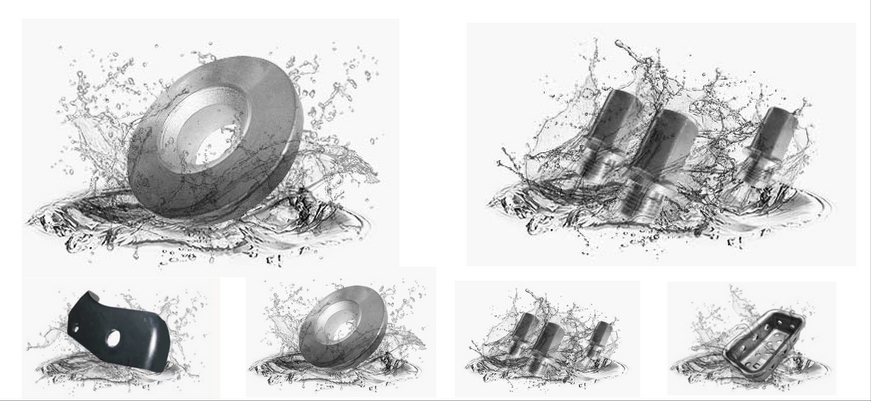
Corrosion And How To Protect The Metal From It
Corrosion is the process of consumpting construction materials by chemical action of the fluids, devastatingly affecting metals and inorganic metals, as well as participating in the degradation of organic materials.
Corrosion and corrosion protection of the metals
Corrosion is an unwanted process we encounter on a daily basis, which is due to the metal reaction and the environment the metal is in.
It is dangerous for several reasons, and one of the major is; damaging the metal to such extent that it changes some of its mechanical properties.
One of the curiosities related to corrosion and the importance of anti-corrosion protection; is the fact that the corrosion causes a loss of 3.5% of world GDP annually.
However, not all metals are subject to corrosion. Metals such as zinc, nickel, tin, aluminum, gold, platinum and alloy steel; where the percentage of chromium is greater than 13% are corrosion resistant.
Moreover, some of the precious metals such as gold and platinum are corrosion-resistant as well.
Corrosion types
If corrosion would be divided into types, then there would be:
- General corrosion which affects the entire surface of the metal. Such corrosion damages the entire surface of the material equally. The general corrosion is also known as “rust”.
- Pitting corrosion is such a corrosion which occurs in small wells on the surface of the material, which grow into larger holes over time.
- Intercrystalline corrosion penetrates the material and is, therefore, almost invisible on the surface.
- Selective corrosion which attacks only individual components of the complex material. This type of corrosion begins on the surface of the material and then penetrates its interior and attacks at different speeds.
- Stress corrosion cracking is such a corrosion which occurs when the material is subject to the ultimate tensile strength; as well as the action of an aggressive agent
Corrosion protection
Numerous methods have been developed for corrosion protection, which could be divided into:
- Corrosion protection by coating– For this type of protection, the first thing that is needed is to remove all impurities such as fat and corrosion. Surface preparation is usually carried out by grinding, brushing, polishing, blasting or blotting. As for the coatings applied to the material, they can be metal, enameled, ie the most known and most widespread, paints and varnishes
- Electrochemical corrosion protection – Electrochemical corrosion protection is carried out for metals that are not easily accessible and can’t be easily maintained. Electrochemical corrosion protection is applied to the protection of oil pipelines, ships, reservoirs and other appliances used in the industry
- Structural measures – corrosion protection related to the selection of those materials which have certain properties that reduce the likelihood of corrosion
- Protection by changing circumstances – This type of corrosion protection is carried out by changing the surrounding factors participating in the damage process. In this type of protection, mention should be made of corrosion inhibitors which, in small doses, prevent the corrosion process
Galvanization as a form of corrosion protection
One of the most known methods of protecting metal from corrosion is galvanization. Galvanizing is nothing more than applying a thin layer of zinc to a material that is to be protected from corrosive action.
Galvanization is the most common method of metal protection. The zinc coating process is carried out by immersing metals in molten zinc, by electrochemical process, zinc spraying and zinc diffusion.
However, the most commonly used galvanization method is the hot-dip galvanizing process whereby the metal is plunged into a zinc of 450 ° C temperature. This is also one of the oldest metal protection methods that is very cost effective and simple.
After galvanization, the metal is protected for almost its entire life span.


